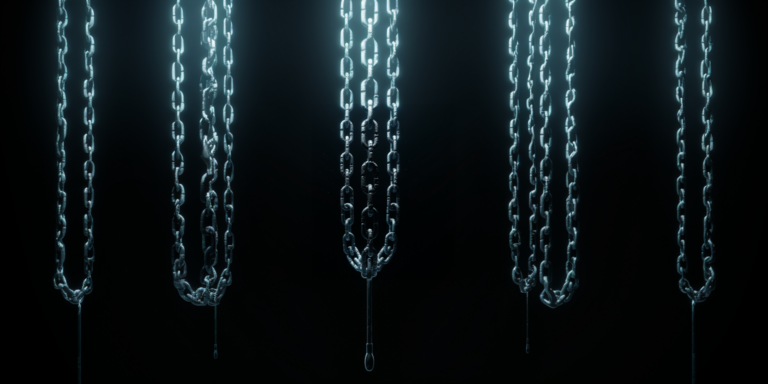We dig into the season two episode ‘Sith’ and consider how it challenges the boring binary of Light Sid and Dark Side.
Lucasfilm
Star Wars Explained is our ongoing series, where we delve into the latest Star Wars shows, movies, trailers, and news stories to divine the franchise’s future. This entry examines the Star Wars Visions season two episode Sith and why the animated realm is only allowed to consider the Gray Jedi.
With the “May the Fourth Be With You” release of Star Wars: Visions season two, Lucasfilm proves that its most innovative storytelling remains in the animated realm. They’ve expanded their imagination beyond conventional design, direction, and plot by contacting various production houses like Aardman, Cartoon Saloon, El Guiri, and Punkrobot. Whether or not Visions‘ second season is equal to or better than its first is up for debate and probably relies heavily on personal preference. What is undeniable is the consideration that these companies inject into old ideas.
Star Wars: Visions season two premieres with a vicious lightsaber duel episode called “Sith.” The fifteen-minute short comes from El Guiri, the Spanish animation studio that worked within such major movies as The Incredibles, Wall–e, Ratatouille, and Cars. Director Rodrigo Blaas‘ style is scratchy, sweeping, and colorful. The script is rather basic, pitting a former Sith apprentice against her master. On the other hand, the Star Wars concept it explores is one painfully absent from the live-action adventures.
When we first meet Lola, she’s conked out on her bunk. Her droid companion, E2, prods her awake. We see that she’s missing multiple limbs but functioning through mechanical enhancements a la Vader and Maul. She’s obviously been through it. However, Lola’s current daily rituals mostly include painting the inner walls of her secluded starbase.
Artists are not new to Star Wars. Sabine Wren, the Mandalorian Rebel who will soon return in Ahsoka, splashed her passion on whatever surface would have her, including her body armor. For Sabine, graffiti was another form of rebellion, spraying the message of uprising across the galaxy. The Empire learned to hate her art, and fans learned to crave it. In anticipation for Ahsoka, the mural she created during Star Wars: Rebels‘ last moments has been everywhere online.
Lola’s artistic expression is seemingly less activated but speaks directly to her inner turmoil. Early in “Sith,” we witness how darkness infects her colorful outbursts. She strives to slather her canvas with bright expression. The harder she pursues it, the quicker the inky blacks invade.
When her Sith Master finally catches up to her, they collide within her art. He mocks her colorful attempts, “Darkness is your fate. Becoming a Sith Master will be your only escape.” Lola observes the black bubbles floating around her, and revelation occurs. “Light and darkness are part of the painting,” she says. “Part of me.”
She reverts the black bubbles into their colorful state with those three words. Lola lunges out with the Force, collects her lightsaber, and ignites a second red blade from the other end of the hilt. The Sith claims this as a victory, but Lola won’t allow it. She’s carved her own path apart from the Light Side/Dark Side binary.
She never says it, but she’s a Gray Jedi. The concept was first floated around Star Wars canon in the Dark Horse Comics series, Star Wars: Republic: The Stark Hyperspace War. It described those Force-sensitive individuals who rejected the binary, riding the line between the Light and the Dark. Later, in The Phantom Menace novelization, the term was used to describe Qui-Gon Jinn, the Liam Neeson character who refused to bow to every Jedi Temple order.
Since then, the Gray Jedi descriptor has popped up here and there in The Clone Wars animated series, plus numerous comics and books. Unfortunately, Lucasfilm has backed off from the concept significantly in recent years. In The Last Jedi, Rey’s narrative hinted that she might be heading toward a proper balance of the Force after recognizing her Dark Side attributes in Ahch-To’s mirrored cave.
Later in the same movie, Yoda brings down lightening on Luke’s Jedi Temple, burning those precious texts and dismissing them as mere words. If you examine the Skywalker Saga, The Clone Wars, and Rebels, the Jedi Order is revealed to be as feeble as the next struggling sentient organization. Not only did they fail to suss out the evil brewing right under their noses, but they also failed to learn from their mistakes, perpetuating the same cycle in the sequel trilogy. Learning from Luke Skywalkers’ blunders, Obi-Wan Kenobi’s blunders, and Yoda’s blunders could propel Rey toward revelation.
Sadly, The Rise of Skywalker just wants to sell more lightsabers and Galaxy’s Edge tickets, so it doubles down on Jedi Light Side badassery, ignoring the potential growth suggested in the Rian Johnson movie. Kylo Ren’s journey from Light to Dark to Light again somewhat follows a possible Gray Jedi’s trajectory. Although, J.J. Abrams’ movie doesn’t have the space to examine the transition outside of its plot save.
What is Star Wars: Visions‘ relationship with the canon? It seems tenuous at best and totally ignorable at worst. Many episodes stray so far from conventional design that their association with Return of the Jedi or whatever is impossible. “Sith” departs visually somewhat from what we’ve seen before, but not too much. Personally, I’d have no trouble folding it into my headcanon.
As with all Star Wars animated properties, fewer eyes on Visions allow it to be a little more narratively experimental. Lola can flirt with the Gray Jedi concept. We’ll most likely never see her again. Maybe a small response to it will be strong enough for the in-betweener Force-wielder to become relevant again.
“Balance of the Force” is another idea thrown around throughout the decades. When are we going to see its execution?
Balance demands growth, and growth is extremely difficult in an IP. Captain America must always be that man out of time, unable to connect with those hip young Avengers around him. Batman can never move past his childhood trauma; far too many Gotham rogues need a thrashing. The status quo must be maintained, but now and again, it can be challenged. “Sith,” a fifteen-minute short from a Spanish animation studio, pushes a little against the franchise’s binary notions of good versus evil. That’s enough to satisfy today, if not tomorrow.
Star Wars: Visions season two is now streaming on Disney+
Related Topics: Star Wars, Star Wars Explained

Recommended Reading
















